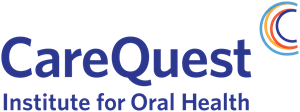- Social Factors Help Explain Worse Cardiovascular Health among Adults in Rural Vs. Urban Communities
- Reducing Barriers to Participation in Population-Based Total Cost of Care (PB-TCOC) Models and Supporting Primary and Specialty Care Transformation: Request for Input
- Secretary Kennedy Renews Public Health Emergency Declaration to Address National Opioid Crisis
- 2025 Marketplace Integrity and Affordability Proposed Rule
- Rural America Faces Growing Shortage of Eye Surgeons
- NRHA Continues Partnership to Advance Rural Oral Health
- Comments Requested on Mobile Crisis Team Services: An Implementation Toolkit Draft
- Q&A: What Are the Challenges and Opportunities of Small-Town Philanthropy?
- HRSA Administrator Carole Johnson, Joined by Co-Chair of the Congressional Black Maternal Health Caucus Congresswoman Lauren Underwood, Announces New Funding, Policy Action, and Report to Mark Landmark Year of HRSA's Enhancing Maternal Health Initiative
- Biden-Harris Administration Announces $60 Million Investment for Adding Early Morning, Night, and Weekend Hours at Community Health Centers
- Volunteer Opportunity for HUD's Office of Housing Counseling Tribe and TDHE Certification Exam
- Who Needs Dry January More: Rural or Urban Drinkers?
- Rural Families Have 'Critical' Need for More Hospice, Respite Care
- Rural Telehealth Sees More Policy Wins, but Only Short-Term
- States Help Child Care Centers Expand in Bid To Create More Slots, Lower Prices
View the New Nursing Workforce Dashboard that Has Been Released.
HRSA’s Bureau of Health Workforce (BHW) released a new nursing workforce dashboard. Users can access data from the latest National Sample Survey of Registered Nurses (NSSRN) through multiple visualizations that can be customized by nurse type, status, and area, all while experiencing native 508 compliance and accessibility in an intuitive, user-friendly dashboard.
CMMI Eyes Population-Based Models Aimed at Increasing Primary, Specialty Care Coordination
The Center for Medicare and Medicaid Innovation (CMMI) is eyeing population-based payment models aimed at increasing care coordination between primary care physicians and specialists, according to its updated strategic vision for value-based care. Other initiatives include accountable care organization (ACO) models that increase primary care access for Medicaid members, specialty-focused models, and improved ways to measure ACO results. Read More.
Pennsylvania Dental Board Raises Renewal and Application Fees
Final-form rulemaking published on November 4, 2022, Pennsylvania Bulletin will increase the application fees and biennial renewal fees for all license, certification, and permit types issued by the Pennsylvania State Board of Dentistry. The fee increases were initially proposed for 2021 but were delayed because of the pandemic’s impact on dental practices; the fee increases now commence on Nov. 5, with increases occurring on a graduated basis over three renewal cycles. All state boards are required by law to establish fees that cover the cost of operations of the board. Access the final rule and newly established schedule of fees here.
The Congressional Research Arm Releases 340B Reports
Last month, the Congressional Research Service (CRS), Congress’s nonpartisan research arm, released two reports on 340B. The first report details the conflicting decisions from recent court cases related to 340B contract pharmacies and also give options on how Congress can intervene given the uncertainty with the program. The second report gives an overview of the 340B program as a whole, providing details on program data sales and entity participation, statutory requirements, changes to the 340B statute over time, Government Accountability Office reports and recommendations, and the contract pharmacy litigation. NACHC is actively working on a federal legislative strategy for 2023 to address the instability in the 340B Program. This week’s elections will determine who the key players are in Congress that health centers will need to work with to get 340B legislation passed.
Review the Medicaid and CHIP PHE Data Snapshot Here
Last week, the Centers for Medicare and Medicaid Services (CMS) released an update to the Medicaid and Children’s Health Insurance Program (CHIP) COVID-19 data snapshot. This preliminary data compares April 2022 to February 2020 and shows overall enrollment in Medicaid and CHIP increased by 20%. Information on COVID-19-related service utilization by beneficiaries includes data on COVID-19 testing, treatment, service use among those 18 and younger, telehealth, mental health, and other services.
Millions Have Health Insurance that Isn’t Good Enough
Commonwealth Fund President David Blumenthal and Sara Collins, VP of Health Care Coverage authored an op-ed discussing the underlying causes of inadequate health insurance and the sky-high cost of healthcare. Introducing and enforcing price transparency and reforms promoting value in healthcare would slow growth in spending and provide short-term relief. Legislation like the Inflation Reduction Act premium subsidies becoming permanent could aid in alleviating some of the consumer pain.
New Index Assesses Addiction Recovery Environment in Every County
 A new index is designed to assess the “recovery environment” in each U.S. county. The Index from the Center for Rural Health Research at East Tennessee State University called the Recovery Ecosystem Index Mapping Tool drills down to the county level to assess drug recovery systems across the country. The tool provides information on the availability of different treatment options, support systems for people in recovery, and social factors such as housing costs, transportation, and more.
A new index is designed to assess the “recovery environment” in each U.S. county. The Index from the Center for Rural Health Research at East Tennessee State University called the Recovery Ecosystem Index Mapping Tool drills down to the county level to assess drug recovery systems across the country. The tool provides information on the availability of different treatment options, support systems for people in recovery, and social factors such as housing costs, transportation, and more.
The mapping tool, created in association with the National Opinion Research Center (NORC) at the University of Chicago and the Fletcher Group, shows the recovery resources available in every county in the United States. The index then rates each county by comparing resources and demographic information against the county’s overdose mortality rates.
“The index is intended to serve local stakeholders to help them better understand the availability of recovery-related resources in their county and neighboring counties,” said Andrew Howard with the Fletcher Group in an email interview.
Researchers hope the index can also be used to develop best practices for use in other communities, as well as be used by policymakers to better understand how services are distributed, and how they can target counties that lack resources.
“We are hoping that people at the community level will use this tool to first determine the recovery ecosystem score for their community, but then to dig into the data to really understand where they can invest to create a better support system for their people,” said Michael Meit, co-director of the Center for Rural Health Research and one of the researchers on the project.
American Dental Public Health Group Launches Veterans Oral Health Initiatives
Did you know veterans experience poorer oral health outcomes compared to non-veterans? The American Institute for Dental Public Health (AIDPH) has been working hard to improve oral health for American veterans. Their latest initiatives include the Veteran Oral Health Dashboard and a veterans oral health listserv. AIDPH is also asking for help in disseminating their second survey focused on giving space to veterans to share their oral health stories. If you work with veterans, please consider sharing the survey. Veteran voices are crucial in education and advocacy efforts.
Click here to view the dashboard.
Click here to join the listserv.
Click here for the veteran survey.
Report Highlights Lessons from Dental Utilization During the Pandemic
 The CareQuest Institute for Oral Health released a visual report examining dental procedure utilization during the COVID-19 pandemic, using Medicaid and commercial insurance claims data to find differences in trends by age and insurance type. The authors note a need for the oral health profession to maintain a state of emergency readiness to be able to provide consistent care in the face of future public health emergencies.
The CareQuest Institute for Oral Health released a visual report examining dental procedure utilization during the COVID-19 pandemic, using Medicaid and commercial insurance claims data to find differences in trends by age and insurance type. The authors note a need for the oral health profession to maintain a state of emergency readiness to be able to provide consistent care in the face of future public health emergencies.
Pennsylvania Secretary of Health Highlights Benefits of Community Water Fluoridation During Visit to Shippensburg

Pennsylvania Physician General and Acting Secretary of Health Dr. Denise Johnson was in Shippensburg last week speaking to the safety and benefits of community water fluoridation. In the last few years, Shippensburg faced a fluoridation rollback threat that was overcome with the help of local oral health stakeholders. Dr. Johnson and the Pennsylvania Department of Health are encouraging water systems that do not currently fluoridate to consider initiating for the best interest of their customers. Executive Director Helen Hawkey and Public Health Dental Director Dr. Jonise McDaniel were in attendance.
